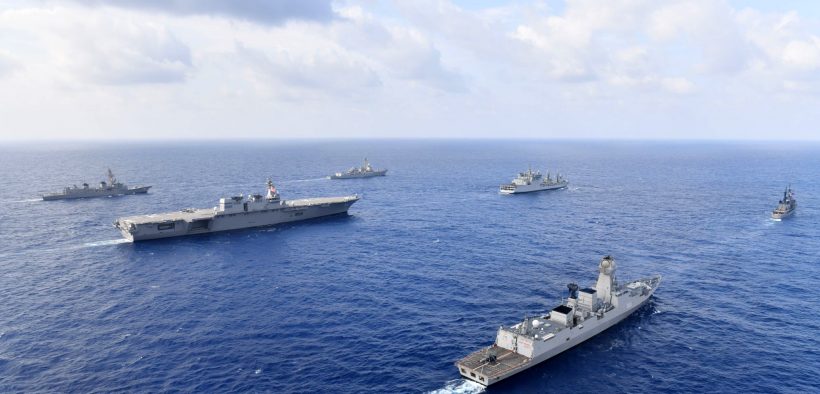Brewing Conflict in the South China Sea

On Monday July 13, Secretary of State Mike Pompeo issued a statement that could set the stage for further conflict in the South China sea. Pompeo firmly rebuffed China’s claims in the region stating, “We are making clear: Beijing’s claims to offshore resources across most of the South China Sea are completely unlawful, as is its campaign of bullying to control them.”
China’s “Nine-Dashed Line”
For decades China has asserted that over a million square miles of the South China Sea are part of China’s sovereign territory. This claim includes almost the entire Sea and is not internationally recognized. The general area under dispute is originally noted in a 1947 map with a dashed line indicating the largest part of the South China Sea that had historically been under Chinese control. Several different versions of the map have been released with the dashes slightly altered and it’s come to be known as the “Nine-dash line.” Because of the nature of the dashed line it is not a precise border, it has never been internationally approved or recognized, and Beijing has unilaterally changed it according to their view of what belongs to China.
To back up the claims to the South China Sea, China has engaged in land reclamation of sand bars and shoals, and built and fortified military installations on several small islands and atolls in the region. One group of islands currently under Chinese control are also claimed by the Philippines and another group is claimed by Malaysia. The U.S. has remained neutral in terms of who own the various land masses in the region. Pompeo’s statement indicates that they will continue to do so but will no longer be tolerant of China’s claims to the water or marine resources.
International Conflict in the South China Sea
In addition to the U.S., the Philippines, and Malaysia, Indonesia, Vietnam, Brunei and Taiwan also have claims to islands and parts of the Sea that fall inside China’s “nine-dash line.”
Significant expansion of China’s political and military authority in conflict with international maritime law would be cause enough for international alarm, but there is also a major economic component to the conflict. As the Secretary of State’s statement explains, China’s claims are not just about controlling the water, but also about claiming the resources. Fishing fleets from many countries operate in the disputed area, and lack of fishery oversight in the region is already leading to potential fishery collapse. High value deposits of oil natural gas, and rare earth minerals are also found in the area.
What happens next?
China’s state-controlled media responded to the U.S. State Department’s release with derision and some thinly veiled threats about China’s weaponry in the region. Currently the U.S. Navy is conducting exercises in the area with two aircraft carriers and a range of smaller warships. China’s military power is significant, but realistically they would be outmatched in a fight against the U.S., especially a Naval engagement. The U.S. has 18 other air craft carriers in addition to the two that are already on site, China has two total. It’s possible that Beijing will escalate to direct military action, but unlikely. What’s more likely is that Beijing will continue increasing their own military presence in the region and fortifying installations there. The U.S. administration has of course not publicly announced what their follow up plans are should China essentially ignore Pompeo’s warning, but they may eventually be forced to take concrete action to end China’s occupation of the area.
China may also opt to respond by flexing their economic rather than military might. This could take the form of trade limits, tariffs, or other measures against the U.S. and their allies in the region. Which ever way Beijing chooses to react, it seems clear that neither side is prepared to back down from their claims and that the situation is likely to escalate.









